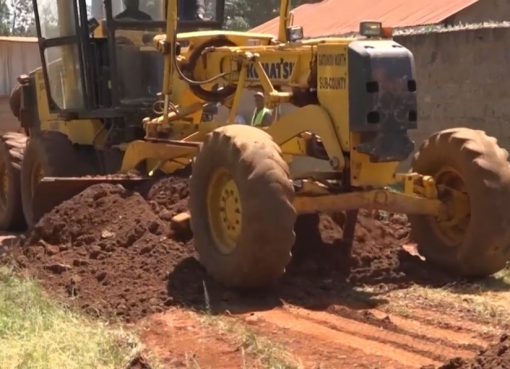The government, in partnership with Waste Electrical and Electronic Equipment (WEEE), is conducting education forums for government officers on electronic waste (e-waste) management.
Under the partnership, which is being spearheaded by the Information and Communication Technology Authority (ICTA), public officers will now be able to surrender their obsolete office equipment for refurbishment to the authority and ensure such items can be put in use again.
The WEEE directive is a legislative act that the European Union adopted to address the growing amounts of e-waste that come from electrical and electronic gadgets.
Dubbed the National Refurbishment, Assembly, and E-waste Management Programme, ICTA intends to employ civil servants as the first line of defence in sensitising the public on the proper management of e-waste as a response to the ever-growing threat emanating from their unregulated disposal.
Mr. Kioko Mutunga, an ICTA project Manager, says the Government has so far collected 15,000 pieces of obsolete electronic equipment from across the country, which are currently undergoing refurbishment, with the number expected to grow in the coming months.
“Government officers have obsolete equipment that they do not find the right way to dispose of on our Kenyan market. These devices end up filling stores, and even when disposal comes into play, people are not able to purchase them. We want to sensitise civil servants who will become our ambassadors on how we can save our environment and ensure there is safe handling from the point of buying up to the point we dispose of them safely,” he told KNA yesterday during a one-day sensitisation workshop for government officers in Nyeri.
The National Environment Management Authority (NEMA) puts Africa’s annual e-waste generation at a staggering 2.9 MT, which accounts for at least one per cent of all global waste.
In Kenya, at least 17,000 metric tonnes of e-waste were generated in 2017, with this figure totaling to 127,000 metric tonnes by last year.
And with the entry of electrical and electronic gadgets expected to maintain a steady projectile in the country, Kenya’s annual e-waste is expected to hit an average of 51,3000 metric tonnes in the coming years.
On top of the table are household equipment such as refrigerators, washing machines, microwaves, televisions, radios, computers, and cell phones.
Given that the information and technology revolution has exponentially increased the use of new electronic equipment, it has also produced growing volumes of obsolete products, making e-waste one of the fastest-growing waste streams globally.
“We must not necessarily take them (electrical and electronic wastes) to where we collect them, but the government has very many institutions where we are going to distribute this functioning equipment. We have learning institutions, digital institutions that require them, and even government institutions that require them,” explained the official.
Mutunga says once the first phase of collecting the devices is complete, they will then embark on the second phase, which will entail the establishment of collection centres for e-waste across the country.
On her part, Nancy Ng’ethe, who is a WEEE officer, underscored the need for Kenyans to understand the vital link between e-waste management and environmental conservation.
She noted that with the growing consumer appetite for high-end gadgets such as smartphones and household electronic items, the majority of which have a short lifespan, there is a need to come up with mechanisms that will address how such products can be disposed of without endangering both humans and the ecosystem.
“Our key role is to create awareness around e-waste to make sure that everybody, from the corporate to the informal sector, is aware of what e-waste is and the dangers of not disposing of it properly. The government has been very supportive, and we now have rules and regulations around how e-waste management should be governed, which was not the case around 12 years ago,” she said.
Kenya’s e-waste management and disposal is anchored under Article 42 of the Constitution, the Public Procurement and Disposal Act Section 165(2), together with the National ICT Policy 2019 and the Environmental Management and Conduct Act (Revised 2015).
But Ng’ethe is advising those intending to dispose of their old electronic equipment to ascertain that the items are totally unserviceable and therefore not worth storage.
She says any electronic gadget must either fall under the repair, reuse, or refurbishment category and can only be recycled if it fails to fit in either of the three.
“Before you get to the recycle bit, you must ensure that your e-waste cannot be reused anymore. So, if you think you have an item that is no longer needed, you can look for a second person who can use it,” she told KNA.
“Recycling is basically saying this device has reached the end of life, and therefore the only remaining thing is to dismantle the item and then get the different partitions, either as glass, plastic, scrap, or the motherboard, which can thereafter be used in another way,” she added.
If improperly disposed of, e-waste like old computers, mobile phones, or kitchen appliances poses environmental and health risks from exposure to lead, mercury, and other toxic materials.
By Samuel Maina and Waithera Mumbi





